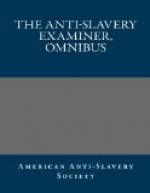We called on the Rev. Mr. Fidler, the superintendent of the Wesleyan missions in Barbadoes. Mr. F. resides in Bridgetown, and preaches mostly in the chapel in town. He has been in the West Indies twelve years, and in Barbadoes about two years. Mr. F. informed us that there were three Wesleyan missionaries in the island, besides four or five local preachers, one of whom is a black man. There are about one thousand members belonging to their body, the greater part of whom live in town. Two hundred and thirty-five were added during the year 1836, being by far the largest number added in any one year since they began their operations in the island.
A brief review of the history of the Wesleyan Methodists in Barbadoes, will serve to show the great change which has been taking place in public sentiment respecting the labors of missionaries. In the year 1823, not long after the establishment of the Wesleyan church in the island, the chapel in Bridgetown was destroyed by a mob. Not one stone was left upon another. They carried the fragments for miles away from the site, and scattered them about in every direction, so that the chapel might never be rebuilt. Some of the instigators and chief actors in this outrage, were “gentlemen of property and standing,” residents of Bridgetown. The first morning after the outrage began, the mob sought for the Rev. Mr. Shrewsbury, the missionary, threatening his life, and he was obliged to flee precipitately from the island, with his wife. He was hunted like a wild beast, and it is thought that he would have been torn in pieces if he had been found. Not an effort or a movement was made to quell the mob, during their assault upon the chapel. The first men of the island connived at the violence—secretly rejoicing in what they supposed would be the extermination of Methodism from the country. The governor, Sir Henry Ward, utterly refused to interfere, and would not suffer the militia to repair to the spot, though a mere handful of soldiers could have instantaneously routed the whole assemblage.
The occasion of this riot was partly the efforts made by the Wesleyans to instruct the negroes, and still more the circumstance of a letter being written by Mr. Shrewsbury, and published in an English paper, which contained some severe strictures on the morals of the Barbadians. A planter informed us that the riot grew out of a suspicion that Mr. S. was “leagued with the Wilberforce party in England.”
Since the re-establishment of Wesleyanism in this island, it has continued to struggle against the opposition of the Bishop, and most of the clergy, and against the inveterate prejudices of nearly the whole of the white community. The missionaries have been discouraged, and in many instances absolutely prohibited from preaching on the estates. These circumstances have greatly retarded the progress of religious instruction through their means. But this state of things had been very much altered since the abolition of slavery. There are several estates now open to the missionaries. Mr. F. mentioned several places in the country, where he was then purchasing land, and erecting chapels. He also stated, that one man, who aided in pulling down the chapel in 1823, had offered ground for a new chapel, and proffered the free use of a building near by, for religious meetings and a school, till it could be erected.




